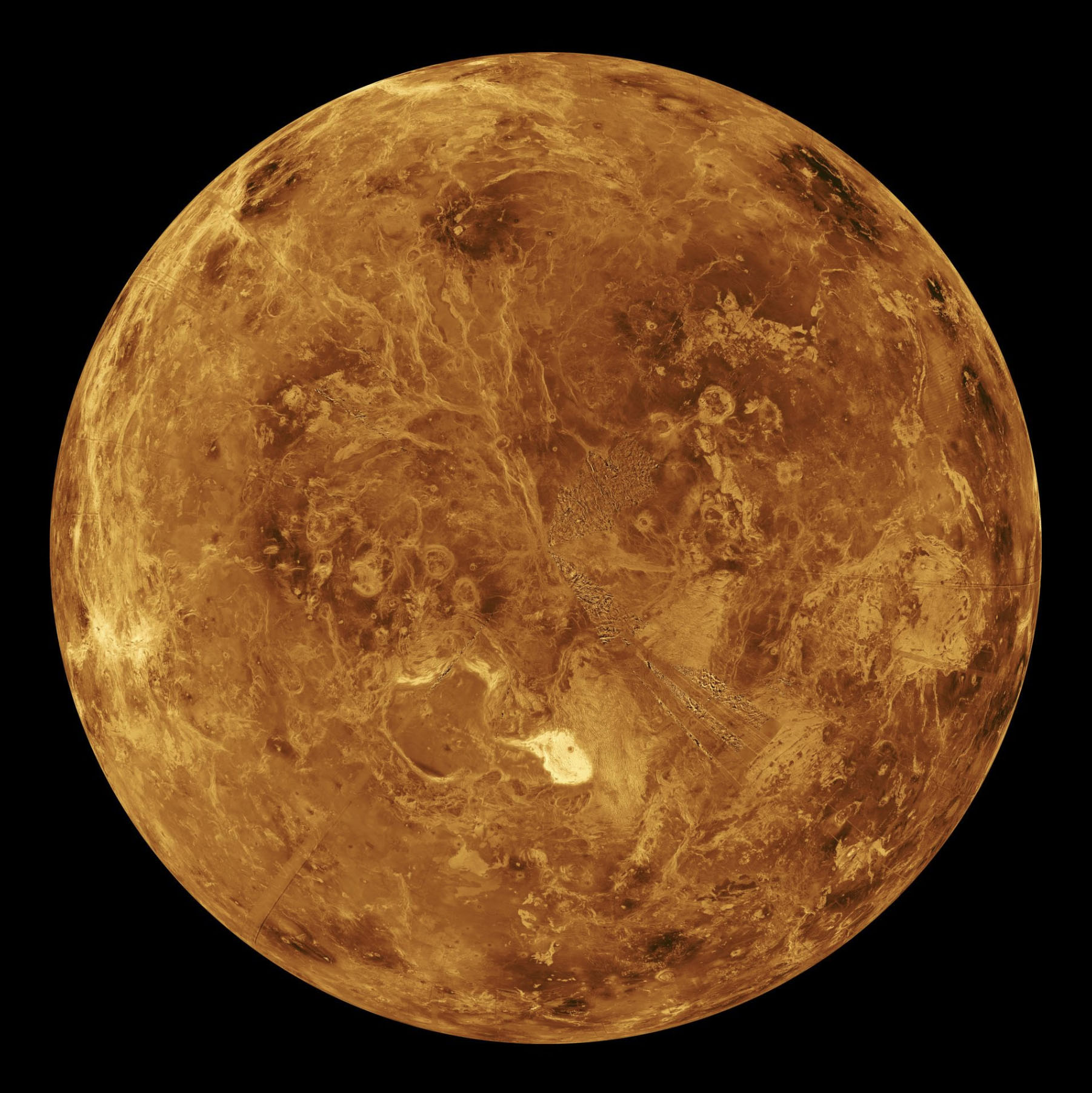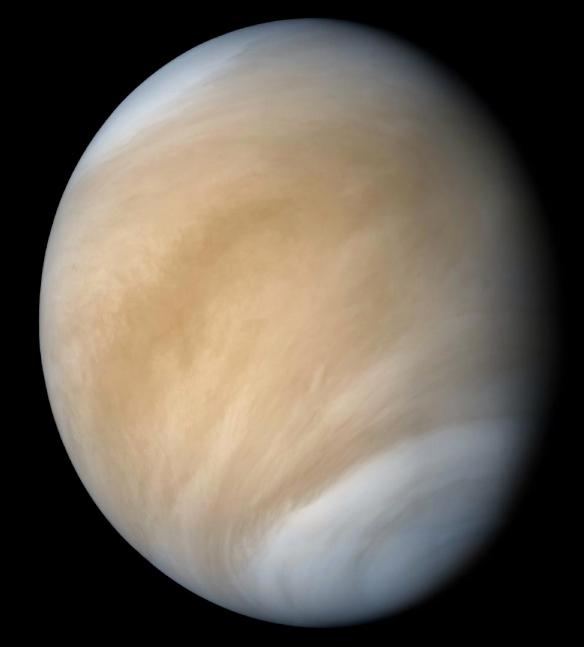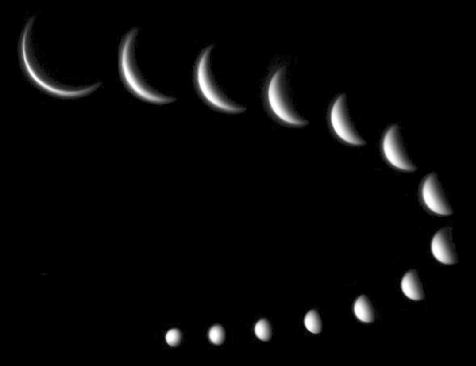Venus
Facts about Venus
• Second planet from the Sun
• It’s a Terrestrial Planet & the hottest planet. Terrestrail means that its surface is rock like and can be walked on.
Diameter: 7,521 miles
Mass: 0.82 Earth’s mass
Density: 5.25 where water = 1
Gravity: 0.9 times that of Earth
Albedo (% of Sunlight reflected): 65%
Rotation on Axis: 243 days
Inclination of Axis to Orbit: 177.4°
Distance from Sun: 67,230,000 miles
Revolution about Sun: 224.7 days
Inclination of Orbit to Earth’s Orbit: 3.4°
Atmosphere: 96% Carbon dioxide, 2.7% Nitrogen plus traces of Argon and Oxygen
Surface Temperature: 900° F
Atmosphere Pressure: 90 times that of Earth
Moons: Venus has no moons.
Most interesting features in a small telescope: With any small telescope at just 50x, you can observe Venus in one of its phases. Since it it totally covered in clouds, no surface features are ever visible and it is not possible to see subtleties in the clouds as in the picture to the right. Venus is a crescent when it is the brightest in the sky and this is a pretty sight!

The surface of Venus beneath the ever present white clouds is cratered from extreme volcanic activity. This type of image was obtained using radar from spacecraft that have been placed into orbit around the planet.


